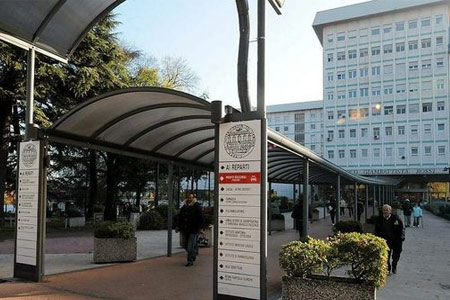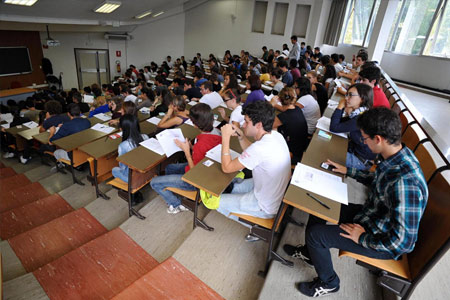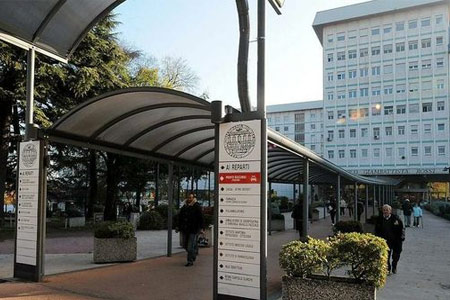- Autori:
-
Cano Garcia, Cristina; Piccinelli, Mattia Luca; Tappero, Stefano; Panunzio, Andrea; Barletta, Francesco; Incesu, Reha-Baris; Tian, Zhe; Saad, Fred; Briganti, Alberto; Terrone, Carlo; Shariat, Shahrokh F; Graefen, Markus; Tilki, Derya; Antonelli, Alessandro; De Cobelli, Ottavio; Kosiba, Marina; Banek, Severine; Kluth, Luis A; Chun, Felix K H; Karakiewicz, Pierre I
- Titolo:
-
Differences in overall survival of T2N0M0 bladder cancer patients vs. population-based controls according to treatment modalities
- Anno:
-
2023
- Tipologia prodotto:
-
Articolo in Rivista
- Tipologia ANVUR:
- Articolo su rivista
- Lingua:
-
Inglese
- Referee:
-
No
- Nome rivista:
- Scandinavian Journal of Urology and Nephrology
- ISSN Rivista:
- 0301-1623
- N° Volume:
-
55
- Numero o Fascicolo:
-
5
- Intervallo pagine:
-
1117-1123
- Parole chiave:
-
Bladder cancer; Life expectancy; Life tables; SEER
- Breve descrizione dei contenuti:
- Purpose: It is unknown to what extent overall survival (OS) of organ-confined (T2N0M0) urothelial carcinoma of the urinary bladder (UCUB) patients differs from age- and sex-matched population-based controls, especially when treatment modalities such as radical cystectomy (RC), trimodal therapy (TMT), or radiotherapy (RT) are considered. Methods: Relying on the Surveillance Epidemiology and End Results database (2004-2018), we identified newly diagnosed (2004-2013) T2N0M0 UCUB patients treated with either RC, TMT or RT. For each case, we simulated an age- and sex-matched control (Monte Carlo simulation), relying on Social Security Administration Life Tables with 5 years of follow-up, and compared OS with that of RC-, TMT-, and RT-treated cases. Additionally, we relied on smoothed cumulative incidence plots to display cancer-specific mortality (CSM) and other-cause mortality (OCM) rates for each treatment modality. Results: Of 7153 T2N0M0 UCUB patients, 4336 (61%) underwent RC, 1810 (25%) TMT, and 1007 (14%) RT. At 5 years, OS rate in RC cases was 65% vs. 86% in population-based controls (Δ = 21%); in TMT cases, 32% vs. 74% in population-based controls (Δ = 42%); and in RT, 13% vs. 60% in population-based control (Δ = 47%). Five-year CSM rates were highest in RT (57%), followed by TMT (46%) and RC (24%). Five-year OCM rates were the highest in RT (30%), followed by TMT (22%) and RC (12%). Conclusion: OS of T2N0M0 UCUB patients is substantially less than that of age- and sex-matched population-based controls. The biggest difference affects RT, followed by TMT. A modest difference was recorded in RC and population-based controls.
- Id prodotto:
-
135558
- Handle IRIS:
-
11562/1108465
- ultima modifica:
-
17 febbraio 2024
- Citazione bibliografica:
-
Cano Garcia, Cristina; Piccinelli, Mattia Luca; Tappero, Stefano; Panunzio, Andrea; Barletta, Francesco; Incesu, Reha-Baris; Tian, Zhe; Saad, Fred; Briganti, Alberto; Terrone, Carlo; Shariat, Shahrokh F; Graefen, Markus; Tilki, Derya; Antonelli, Alessandro; De Cobelli, Ottavio; Kosiba, Marina; Banek, Severine; Kluth, Luis A; Chun, Felix K H; Karakiewicz, Pierre I,
Differences in overall survival of T2N0M0 bladder cancer patients vs. population-based controls according to treatment modalities
«Scandinavian Journal of Urology and Nephrology»
, vol.
55
, n.
5
,
2023
,
pp. 1117-1123
Consulta la scheda completa presente nel
repository istituzionale della Ricerca di Ateneo 








